Duct work is a key to a healthy building. While there is not any one single thing that can be done in a building to achieve healthy indoor air quality, duct work is a critical element in the system. On one of our current projects at a local church, we are in the construction process to mitigate indoor air quality and water intrusion issues. Facilities of this scale are difficult to manage without a full-time building maintenance team. In this case, issues arose which further complicating things; decisions during a construction job 25+ years ago to cut construction costs have ended up causing indoor air quality challenges. The elimination of a fresh air distribution system as a cost cutting factor increased the potential for indoor air quality challenges for instance.
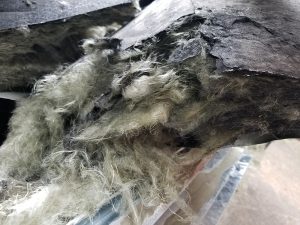
Added complications
At the time, it was acceptable to use fiberglass insulation inside of duct work to control noise from the mechanical system in the sanctuary. This fiberglass insulation captured dust and dirt that flowed through the duct work. The dust and dirt provided food for mold growth, and multiple water leaks throughout the structure have added to the complications in this building. The lack of fresh air ventilation, technology available for HVAC at the time, lack of regular preventive maintenance, no dehumidification systems, and high humidity levels have led to this need for a major renovation.
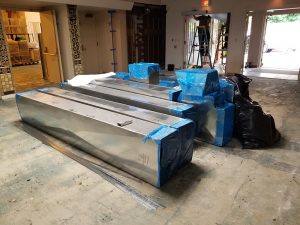
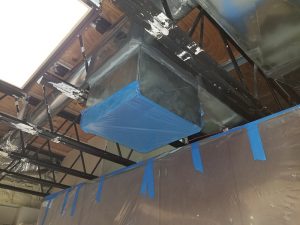
Duct work storage and protection
During the renovation process, it is critical to protect the HVAC duct work that is being installed. A construction site is messy and dusty on a good day. This one already had indoor air quality issues prior to construction. The mechanical contractor, Excel HVAC is sealing all the duct work that is being installed until it is sealed in place. They are also storing duct work that is not currently needed off site to keep it away from the dust and dirt on site. These simple steps protect the ducts to keep them clean and free of damage.
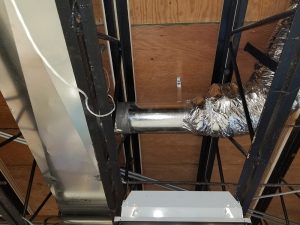
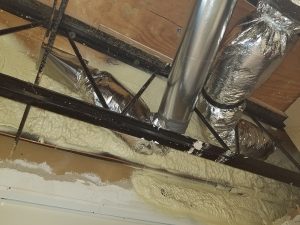
Installation of Duct Work
Once the duct work is installed, all the joints need to be sealed. The vents should be covered until the system is activated, which only happens after all the dirt and dust of construction has ended. Sealing joints in duct work is done with mastic glue and mastic tape. These strategies are geared towards keeping dust and dirt out of the ducts during construction and operation of the system.
These key elements focused on duct work are only one part of the solution. We are also addressing roofing, flashing, and gutter issues. Materials that are impacted by mold are being removed and replaced. This is a complicated project with many moving parts. Working with an integrated team approach using Suter Engineering to design the appropriate HVAC system, and a qualified general contractor, Herr and Company, to manage all the team members is the best strategy overall to achieve the best final solution for this project. Stay tuned for more information as the project continues.




